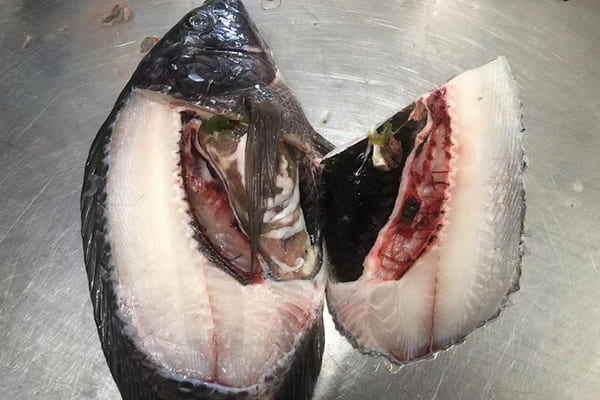You thawed too much fish, and now you’re stuck. You hate waste, but is refreezing it safe for your business? Here is what you need to know before you act.
Technically, you can refreeze tilapia if it was thawed entirely in the refrigerator and never sat at room temperature. However, you should not do it. Refreezing severely damages the fish’s texture, making it mushy, dry, and tasteless after the second thaw.
I get asked this question a lot. My answer is always cautious.
While it’s theoretically possible in one situation, I tell my clients not to do it for their business and reputation.
Let me explain why protecting your quality is more important than saving one fillet.
What Happens When You Refreeze Tilapia?
Refreezing is a smart way to save a few fillets. But this act is silently destroying the quality your customers expect. Let’s look at the irreversible damage that happens inside the fish.
Large, irregular ice crystals form within the meat when you refreeze fish. These sharp crystals puncture and shred the fish’s delicate cell walls. This irreversible damage is the direct cause of the poor quality of refrozen fish.
The Science of Ice Crystal Damage
The water inside fish tissue is the key. During the first professional freeze, the process is speedy.
This rapid freezing creates tiny ice crystals1 that do minimal damage to the fish’s cells.
It’s why professionally frozen fish2 is firm and juicy after thawing.
However, when you refreeze it in a standard commercial or home freezer, the process is much slower.
This slow freezing3 allows large, jagged ice crystals to grow. They act like tiny knives, piercing and destroying the muscle cell walls.
When you thaw this fish for the second time, all the moisture inside those broken cells leaks out.
I once experimented with two identical fillets. One was cooked after the first thaw, and the other was refrozen, thawed again, and then cooked.
The difference was noticeable. The refrozen fish was not something I would ever sell.
| Feature | Properly Frozen Tilapia (Thawed Once) | Refrozen Tilapia (Thawed Twice) |
|---|---|---|
| Texture | Firm, flaky, and moist | Mushy, dry, and "woody" |
| Moisture | High, juices are retained | Low, significant water loss |
| Flavor | Fresh and clean-tasting | Dull and tasteless |
Why Is Refreezing Tilapia Bad For Your Business?
It’s just one fillet, so what’s the harm? That one poor-quality meal could be the reason you lose a loyal customer forever. Your reputation is on the line with every single sale.
Selling refrozen tilapia is bad for business because customers can easily taste the poor quality. Serving a mushy, dry fillet damages your reputation for freshness, erodes customer trust, and can lead to lost sales and bad word-of-mouth.
The True Cost of a Bad Fillet
Your customers trust you to provide a high-quality product. They pay you for fresh, delicious fish, not something that feels dry and "woody."
If you sell them a fillet ruined by refreezing, they will notice. That single bad experience will be what they remember and what they might tell their friends about.
You could lose a customer for life over trying to save a few dollars on one piece of fish. The cost of a lost customer is always higher than that of a wasted fillet.
Your best strategy is always prevention. Carefully plan your daily needs based on your sales, and only thaw the amount of fish you expect to sell.
This is the most reliable way to ensure every customer gets the best quality fish you can offer.
Avoiding refreezing isn’t just about safety—it’s about protecting the business and reputation you’ve worked so hard to build.
Do you want to learn how to plan your storage from the start to avoid this situation? Our complete guide has all the information you need: [storing frozen tilapia].
-
Discover how ice crystals influence the texture of fish, providing insights into the science of freezing and thawing seafood. ↩
-
Explore the advantages of professionally frozen fish, including taste and texture, to understand why it’s a superior choice for your meals. ↩
-
Learn about the impact of slow freezing on food quality and texture, which can help you make better choices in food preservation. ↩


